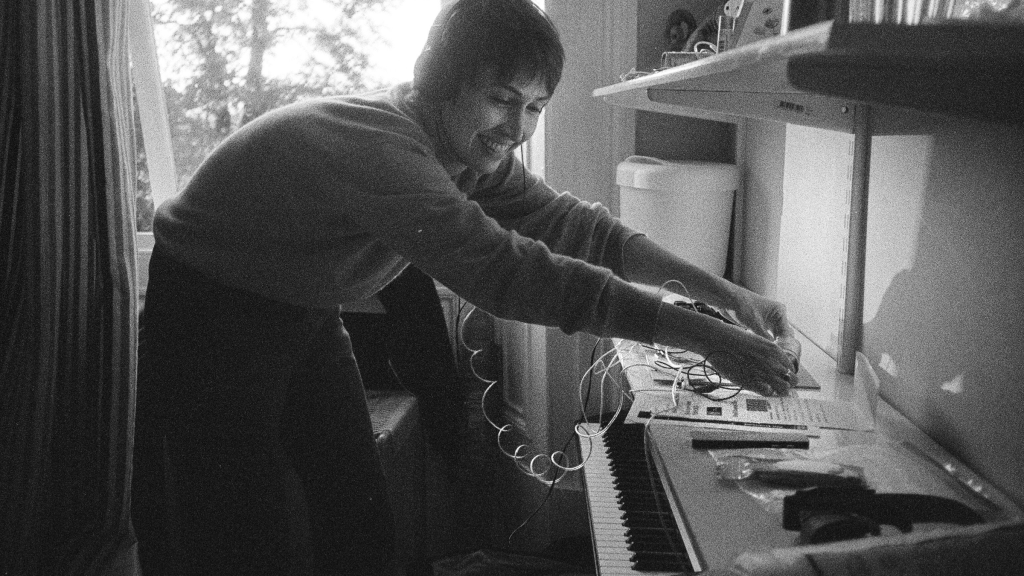
Feminist open-weather handbook
This handbook is a shared resource and series of values and positions that emerged with open-weather’s development. It is a living document co-written by Sasha Engelmann and Sophie Dyer. Inspiration for this document comes from many places, but it is informed greatly by the CLEAR Lab Handbook.
The handbook was created on 17 November 2020 in London, UK.
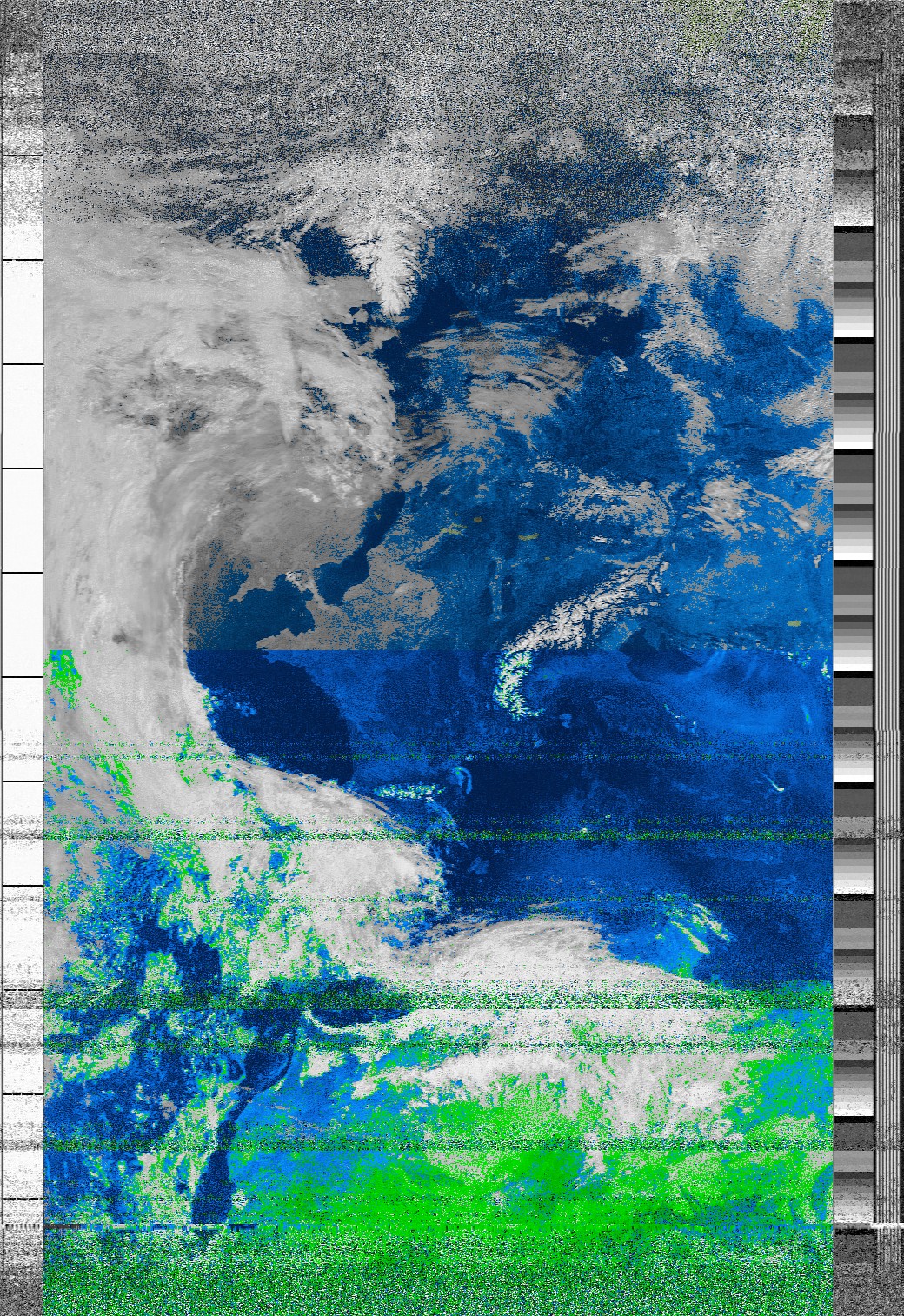
Location is political
In open-weather, we think critically about our ‘politics of location’ – our different social, economic, historical, geographical and political positions. Introduced by black feminists like those of the Combahee River Collective and developed by Adrienne Rich, Audre Lorde, Gloria Anzaldúa and Rosi Braidotti, the politics of location begins with “the geography closest in – the body” (Rich, 1984: 212). As both a method and an analytic that begins with the body, the politics of location addresses “historical, geographical, cultural, psychic and imaginative boundaries which provide the ground for political definition” (Mohanty, 1995: 68) and involves mapping “the networks of power in which [our bodies] are situated” (Neimanis, 2013: 25). In doing so, we examine how we and the open-weather project participate in relationships of power, including those of white supremacy. By identifying and examining our relationships to power or the ‘matrix of domination’, we seek ways of undoing the structures of oppression in which we participate, specifically in the worlds of radio, contemporary art and the academy.
Resources
Combahee River Collective Statement (1977), This Bridge Called My Back (Gloria Anzaldúa and Cherrie Morraga, 1981), ‘Notes Toward a Politics of Location’ (Adrienne Rich, 1986); Black feminist thought: Knowledge, consciousness, and the politics of empowerment (Patricia Hill Collins, 2002); ‘Feminist encounters’ (Chandra Mohanty, 1995), Nomadic Subjects (Rosi Braidotti, 1994), ‘Feminist Subjectivity, watered’ (Astrida Neimanis, 2013), Relational Validity and the “Where” of Inquiry: Place and Land in Qualitative Research (Eve Tuck and Marcia McKenzie, 2015); The Empire Strikes Back: A Post-Transexual Manifesto (Sandy Stone, 1993); The transfeminist manifesto (Emi Koyama).
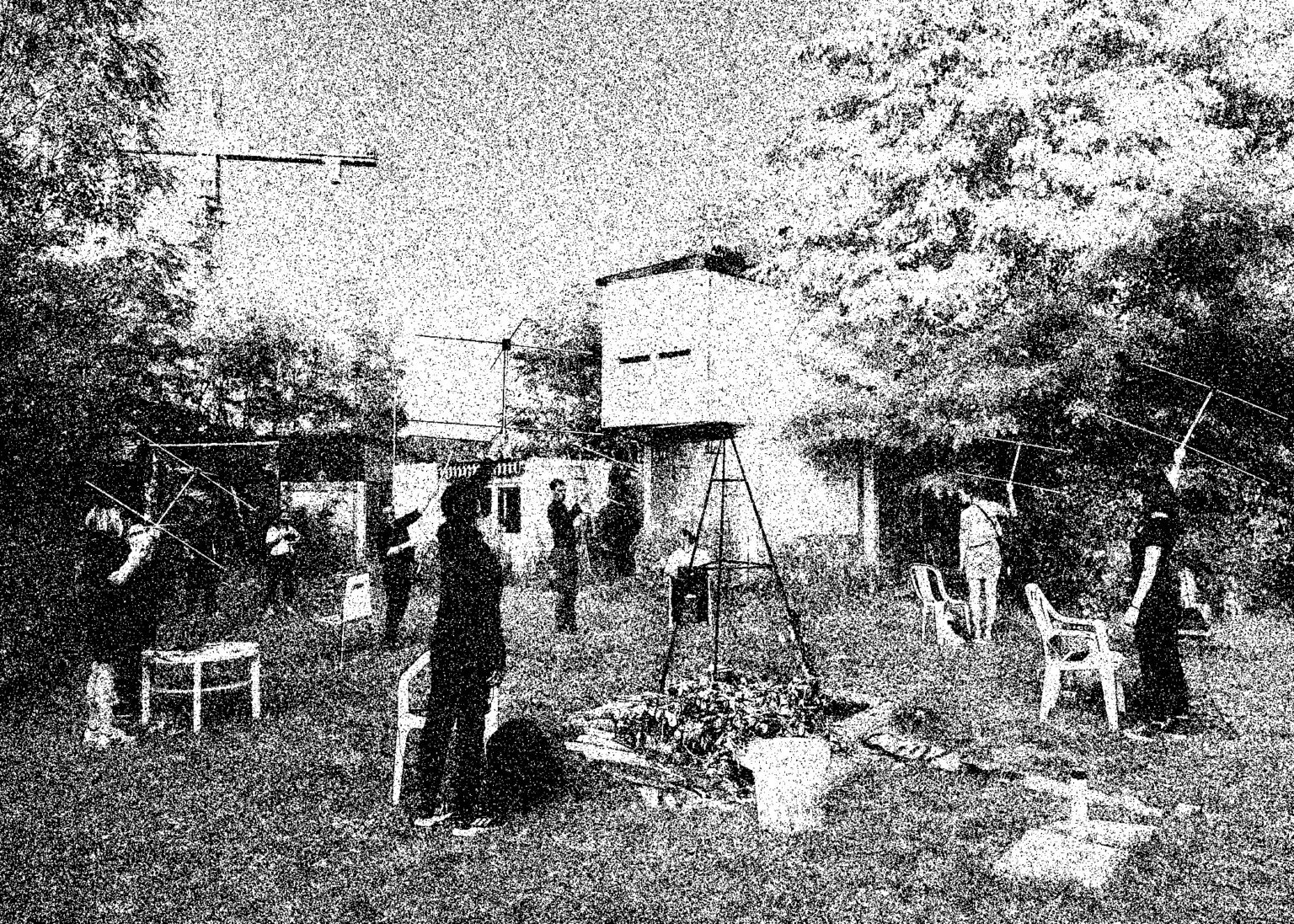
We write critical frameworks
These are often the outcome of events, artworks or performances.
Open-weather meshes together satellite image decoding and technologies of weather sensing with critical and feminist theory, artistic gestures and performance methodologies. We call these interventions in technology, theory and performance our ‘critical frameworks’. At the time of writing there are three fully developed critical frameworks: the Satellite séance; Open work, second body; and the Open-weather nowcast. These critical frameworks use specific tactics and ways of thinking to tell stories about weather sensing and satellite decoding and its different histories. In doing so we question dominant narratives and approaches in the technical, academic and creative spheres in which open-weather operates.
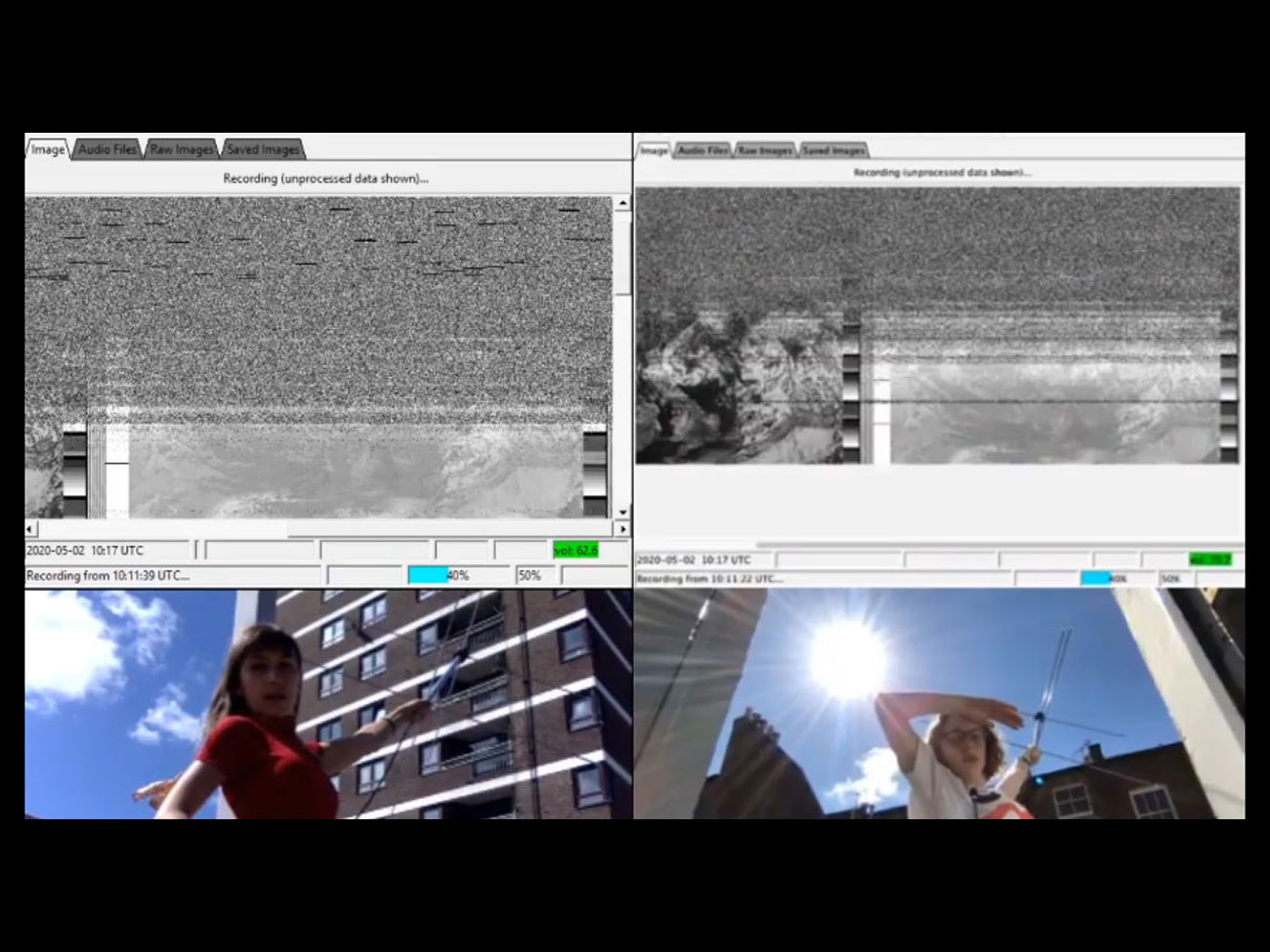
Our bodies count
Open-weather centres the body as a sensing technology. In doing so we depart from amateur radio manuals and principles that largely subtract or erase the body from technological assemblages and vocabularies.
To capture the longest possible image we work to track the NOAA satellites as they pass over us. During long passes our arms ache. We note how the quality of the radio reception changes when, on a metal balcony, we take off our shoes and stand barefoot. In this way, our bodies are present in each radio signal and satellite image.
We find that foregrounding our bodies is one way to challenge the gendered norms and codes attached to technology and technical practices. Together with feminist practitioners who envision chimerical, cyborgian and queer technological hybrids, we propose that ‘our bodies count’.
Resources
Bodies that Matter (Judith Butler, 1993); Relationscapes (Erin Manning, 2009); The Second Body (Daisy Hildyard, 2017); The Cultural Politics of Emotion (Sara Ahmed, 2014); ‘Situating bodies’ (Robyn Longhurst, 2005); Volatile Bodies: Toward a corporeal feminism (Elizabeth Grosz, 1994); ‘A Cyborg Manifesto’ (Donna Haraway, 1985); Trans Desire/Affective Cyborgs (Cardenas and Fornssler, 2010).
We learn from alternative histories of sensing and séance
There’s something in the static
I think I’ve been having revelations
— boygenius, 2023
In open-weather we learn from marginalised stories about the origins of radio technology and the wireless imagination. We align with 19th century séances: spaces in which womxn accessed invisible spectral realms and magnetic forces using a variety of homemade tools, from ‘spirit slates’ to the ‘ectoplasm’. The practices of clairvoyant womxn were intertwined with the emergence of radio communication; clairvoyants were described as a telegraph network. Though this community is rarely cited in histories of radio or technological development, their experiments were key in producing the imaginative conditions that oft-cited inventors like Guglielmo Marconi grasped and instrumentalised for science. Thus, in open-weather, when we raise our antennas and hear a burst of sound in a sea of static, we are participating in a séance. We are listening to, and meeting with, the bodies of womxn who heard a signal in the noise.
Resources
‘The Magnetic North’ (Courtney Stephens and Shane McCorristine, 2014); High Static, Dead Lines (Kristin Gallerneaux, 2020); Otherworldly Impressions: Female Mediumship in Britain and America in the Nineteenth and Early Twentieth Centuries (Giulia Katherine Hoffmann, 2014); The Spectral Arctic (Shane McCorristine, 2018); Remotely sensing affective afterlives: The spectral geographies of material remains (Derek McCormack, 2010); ‘Mind the Gap: Spiritualism and the Infrastructural Uncanny‘ (Bernard Dionysius Geoghegan, 2016).
Open-weather is data feminist
Open-weather is a project engaged in environmental data collecting, interpreting and archiving. For this reason, we are learning from the rich body of work and practice in data feminism. More specifically, we are adhering to the eight principles of data feminism (d’Ignazio and Klein, 2020) in the construction and creation of the open-weather web platform. This has included publishing our methodology for the development of the platform in collaboration with developer Piper Haywood. This methodology offers transparency to our choices of software, server locations, data analytics and privacy policies. Our engagement with data feminism also involves thinking critically and carefully about what kinds of data we are collecting from those who submit to the open-weather archive; what power relations are hidden in this data collection process; and which binaries and hierarchies are often inadvertently re-created in environmental data collection. Taking cues from d’Ignazio and Klein (2020) we are constructing the open-weather platform so that imaginative, speculative and critical uses of weather data are promoted over ‘objective’, utilitarian and deterministic uses.
Resources
Missing Datasets (Mimi Onuoha); Data Feminism Reading Group (Catherine D’Ignazio and Lauren Klein, 2020) GeoChicas; Design Justice: community-led practices to build the worlds we need (Sasha Costanza-Chock, 2020); Our Networks; ‘What would a feminist open source investigation look like?’ (Sophie Dyer and Gabriela Ivens, 2020).
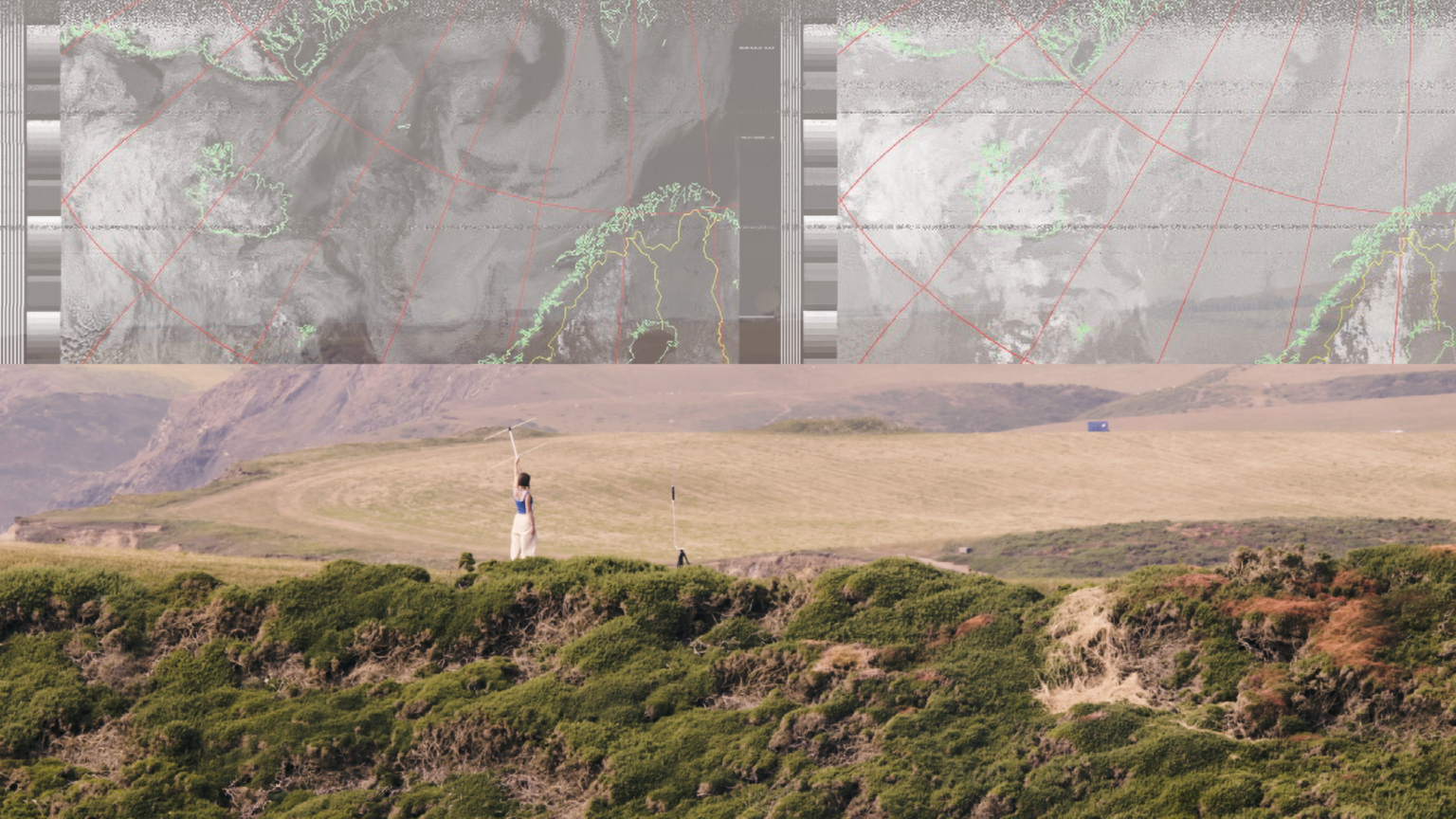
We work to centre access, inclusion, and equity
Imaging the earth using radio is a practice typically known within very narrow circles and demographics. In these circles, people tend to be interested in collecting the longest, most pristine, noise-free image with the best antenna. We want to know what kinds of images would other people make? What questions would others ask, from different positions and places?
This means: 1) all of our ‘how to guides’ feature inexpensive, readily available hardware and software (there will be no £1,000 transceivers required!) 2) our guides, critical frameworks and presentations assume zero background knowledge of radio physics, communication or satellite infrastructure 3) we use the resources of arts and academic institutions to host workshops in which participants collaboratively learn how to decode satellite signals and generate weather images, and, 4) our workshops generate accessible and inclusive spaces for those who have historically been distanced from amateur radio and satellite imagery reception.
Resources
Civic Laboratory for Environmental Action Research; ‘Reflexivity, Positionality and Languages of Collaboration in Feminist Fieldwork’ (Richa Nagar, 2014); Feminist Open Source Reading Group; Shortwave Collective; Datscha Berlin, a Feminist Garden Radio Project; @LadiesOfLandsat; @SistersOfSAR
We challenge the ‘view from nowhere’
We encounter satellite images everyday via the weather apps on our phones and products such as Google Earth. These images inform how we imagine earth and yet their aesthetic grammar is so narrow. They reproduce a vision of the planet that is smooth, whole, and captured completely. In a so-called ‘God trick’ or ‘view from nowhere’, the camera – and so us – are positioned directly above. At stake for us in open-weather is an alternative set of visual strategies for imaging and so imagining our world.
Whether by using our bodies to write noise into a NOAA satellite image, or collectively creating a patchy image of the Earth, we subvert the ‘view from nowhere’ and counter Google Earth’s “forever noon on a cloudless day”. Our images are partial. They are interference prone and they are clouded by multiple weathers.
Resources
‘The Conquest of Space and the Stature of Man’ (Hannah Arendt, 2007); ‘Situated Knowledges: The Science Question in Feminism and the Privilege of Partial Perspective’ (Donna Haraway, 1988); What would feminist data visualization look like? (Catherine D’Ignazio, 2017); Nostalgia for the Light (Patricio Guzman, 2010); Forever Noon on a Cloudless Day (Ingrid Burrington, 2017)
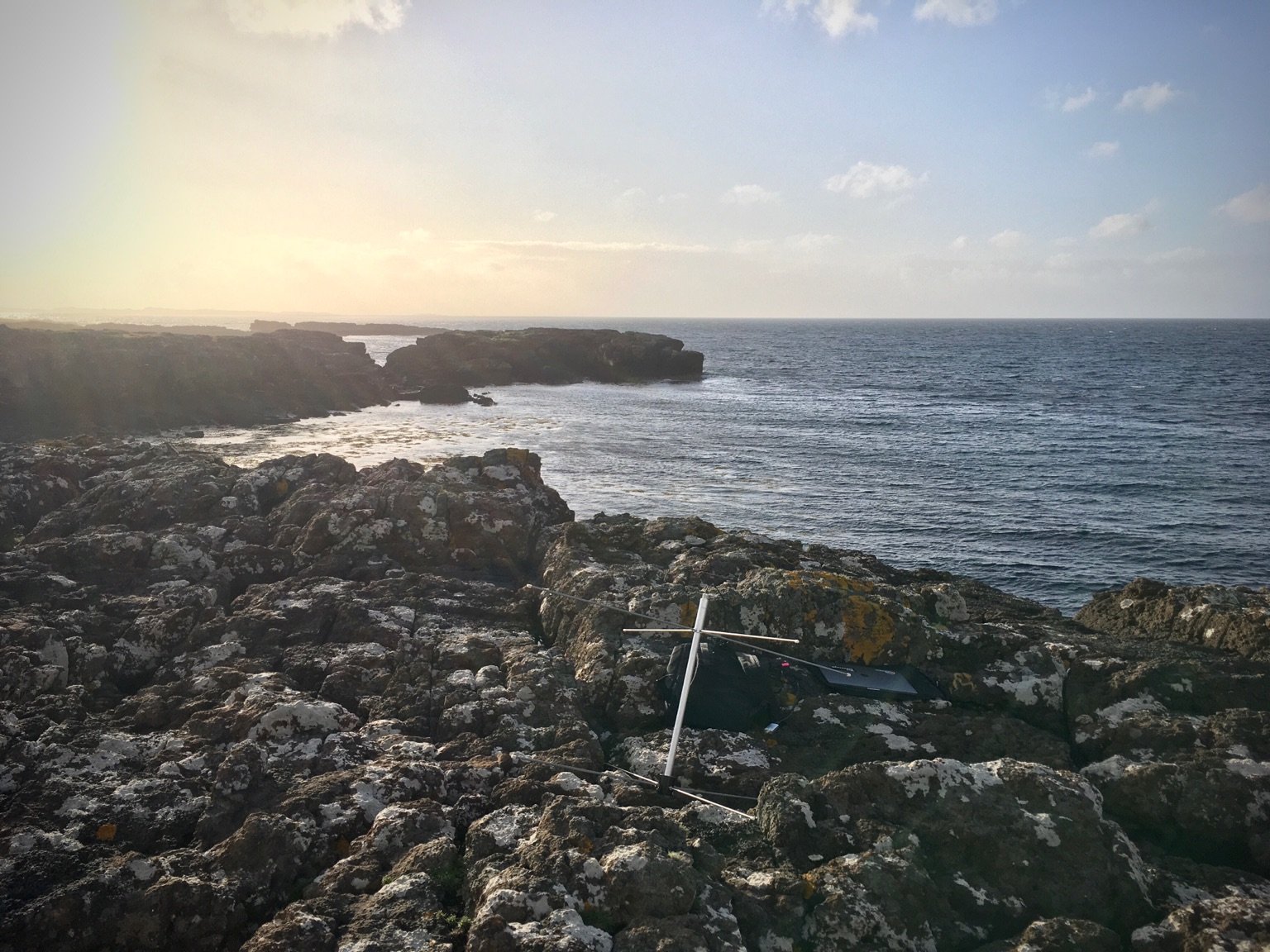
Weathering is not a metaphor
The dance of renewal, the dance that made the world, was always danced here at the edge of things, on the brink, on the foggy coast. —Ursula K. Le Guin
An important part of open-weather’s approach is to reformat and complicate ideas of the weather beyond the meteorological. To do so we draw from the work of Christina Sharpe, Claudia Rankine, Astrida Neimanis and others who figure the weather as sociopolitical and cultural as well as atmospheric. In this vein, ‘weathering’, “means learning to live with the changing conditions of rainfall, drought, heat, thaw and storm as never separable from the ‘total climate’ of [the] social, political and cultural existence of bodies” (Neimanis and Hamilton, 2018: 82). This body of work recognises that forces of colonialism, racism or sexism are not ‘like’ or ‘analogous to’ the weather; these forces are weather. Weathering makes us responsive to our uneven exposures to these ‘more-than-meteorological’ weather systems. In creating and capturing images of weather systems in open-weather, we ask: are we imaging the ‘more-than-meteorological’? How do we make socio-political climates and weather systems legible?
Resources
‘Weather’ (Claudia Rankine, 2020); Citizen: An Americal Lyric (Claudia Rankine, 2014); In the Wake: On Blackness and Being (Christina Sharpe, 2016); ‘Open Space weathering’ (Astrida Neimanis and Jennifer Mae Hamilton, 2018); ‘Feminist infrastructures for better weathering’ (Hamilton, Zettel and Neimanis, 2022); ‘Ordinary atmospheres and minor weather events’ (Susanne Gannon, 2016); ‘The Universal Right to Breathe’ (Achille Mbembe, 2020); World Weather Network.
We care for each other
We care for each other, practise equitable attribution, and we work with intention in order to make open-weather sustainable, in every sense. By working with intention, we mean that we make informed and collaborative decisions that align with our feminist ethics. By caring for each other, we mean that we pay attention to our energy levels and the various other pressures that we are weathering, and we stop working when it is healthy to do so. We frequently say ‘no’ in order to protect our boundaries. We make sure to attribute the authors of the software and hardware that we employ in open-weather methods and workshops, and the ideas that we borrow or adapt from others.
Resources
Civic Laboratory for Environmental Action Research; Solidarity Chat 9: Max Liboiron; Data Feminist Chapter 7: Show Your Work (Make Labour Visible); The Care Manifesto: The Politics of Interdependence
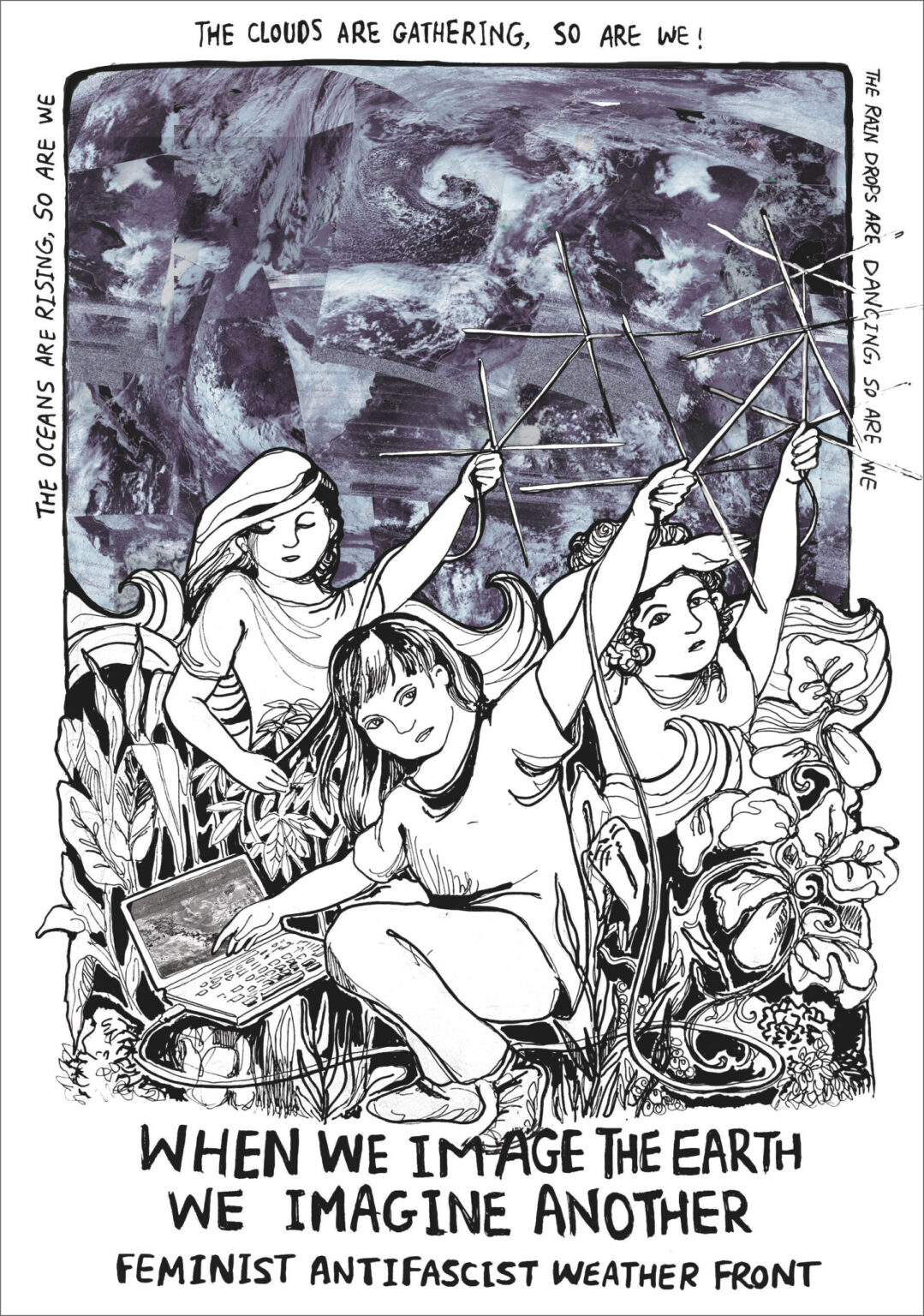
We insist on the possible over the probable
Open-weather is speculative: without turning away from the value of forecasting and prediction, we are committed to activating the possible over the probable. In our presentations and writings, we use fiction to narrate the present, and explore the present as its own fiction. Following a long lineage of feminist science fiction writers from Ursula LeGuin to Octavia Butler, we are invested in ‘speculative gestures’ that engender alternative worlds. With transfeminist oracles, we imagine technologies informed by transfeminist values. With Lola Olufemi, we are holding space for ‘feminist visions’: inventive and experimental ideas about what the world could, should (and must!) be (Olufemi, 2020).
Resources
Experiments in Imagining Otherwise (Lola Olufemi, 2021); The Insistence of Possibles: Towards a Speculative Pragmatism (Isabelle Stengers and Didier Debaise, 2017); Speculative Research: The lure of possible futures (Wilkie, A., Savransky, M., Rosengarten, M. (Eds.), 2017); The future is transfeminist: from imagination to action (Joana Varon, 2020); The oracle of transfeminist technologies (Coding Rights and Design Justice, 2020); When I image the earth, I imagine another (open-weather, 2022).
☁
We tell trans-scalar stories
Coming soon.
The Second Body (Daisy Hildyard, 2017); Gabrielle Hecht, ‘Interscalar vehicles for an african anthropocene: On waste, temporality, and violence’; Sophie Dyer and Sasha Engelmann, ‘Lore of the radio fossil’
Our earth is fractal
Coming soon.
Open-weather: Speculative-feminist propositions for planetary images in an era of climate crisis (Sasha Engelmann, Sophie Dyer, Lizzie Malcolm, and Daniel Powers, 2022); When I image the earth, I imagine another (Sasha Engelmann, Sophie Dyer, Lizzie Malcolm, and Daniel Powers, 2023)
Credits
Thank you to CLEAR Lab for the inspiration to produce a feminist handbook.
We thank to Bianca Stoppani for the invitation to contribute to Almanacare via Almanac Projects.
The first version of this handbook was published on the Almanac Projects website. The commission was supported by Arts Council England.